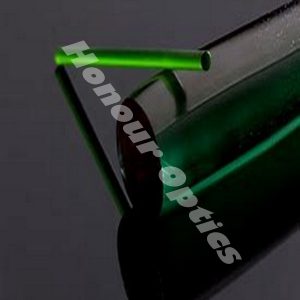

Laser gain material can be single crystal, semiconductor, ceramic or dye. Among them single crystal (monocrystalline material) laser gain material is the best because it has higher transition cross sections, a smaller absorption and emission bandwidth, a higher thermal conductivity, and possibly birefringence. In most cases, they are doped with either trivalent rare earth ions or transition metal ions.
There is a wide range of crystalline media, which can be grouped according to their atomic constituents and crystalline structures.
- garnets such as Y3Al5O12 (YAG), Gd3Ga5O12 (GGG), and Gd3Sc2Al3O12 (GSGG): hard and chemically inert materials, optical isotropic, with high thermal conductivity
- sapphire (Al2O3) (e.g. for titanium–sapphire lasers) and aluminates such as YAlO3 (YALO, YAP) for neodymium doping: high hardness and thermal conductivity, anisotropic
- sesquioxides such as Y2O3, Sc2O3: isotropic, high hardness and thermal conductivity
- vanadates such as YVO4 and GdVO4: very high laser cross sections of Nd3+, anisotropic
- fluorides, e.g. YLiF4 (YLF): good UV transparency, birefringence, large energy storage capability of Nd:YLF; also LiCAF, LiLuF, LiSAF as chromium-doped broadband gain media
- silicates, e.g. MgSiO4 (forsterite): broad gain bandwidth monoclinic double tungstates such as KGd(WO4)2 (KGW) and KY(WO4)2 (KYW): combination of relatively high Yb3+ laser cross sections, large gain bandwidth, and high thermal conductivity
- disordered tetragonal double tungstates such as NaGd(WO4)2 (NGW) and NaY(WO4)2 (NYW): particularly large gain bandwidth of ytterbium chalcogenides such as ZnS or ZnSe for mid-infrared lasers
Laser Crystals with Integrated Saturable Absorber: A few laser crystal materials have been demonstrated where some saturable absorber material is incorporated for passive Q switching of a laser. For example, Cr4+ ions can be incorporated into such Nd-doped crystals for emission in the 1-μm spectral region. This has been tried with Cr:Nd:YAG and Cr:Nd:YVO4, for example.